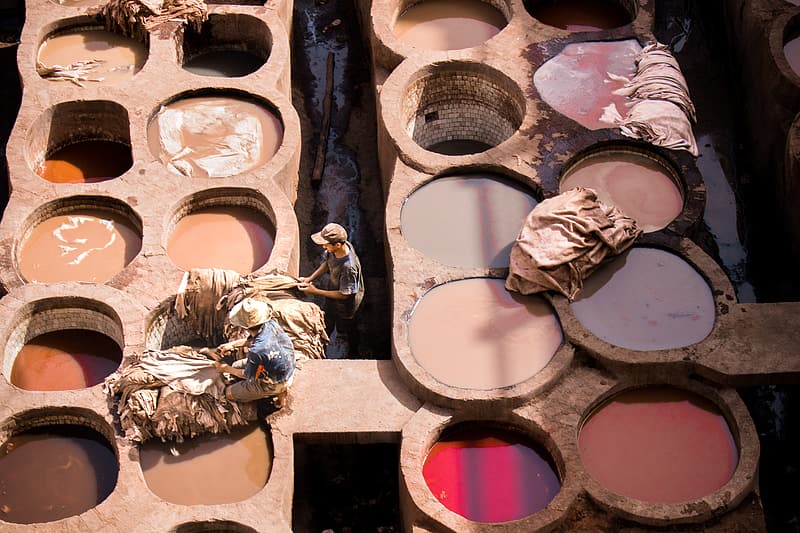What Colors Make Flesh Color?
Want to incorporate realistic flesh tones into your art? For many visual artists, being able to mirror the color of flesh in their artistic creations presents a daunting challenge. After all, not only is the color complex but its definition remains a wonder for many.
However, while choosing the appearance of and recreating flesh tones is a matter of personal preference and style, it cannot be denied that all remarkable art shares the same feature of arresting depictions of this pigment.
If you’re currently wondering how to do the same in your art, knowing how to arrive at your preferred flesh tone via effective color manipulation is a key step to achieving that goal. Here, we have prepared a brief guide that will help you discover how to make that desire a reality.
Excited to know how? Below is a list of definitions and tips to help. Read on…

What Do We Mean by Flesh Color?
Generally, the meaning of “flesh” as a color is subject to debate. In fact, the name is no longer in use and it is now considered offensive by many. Essentially, this issue stems from the fact that skin has many color variations and can vary depending on ethnicity, age, emotions, presence of pathologies, and more.
From rosy white, light beige, and golden caramel, to dark brown, the skin-color spectrum is remarkably diverse. With this, it’s not surprising that what defines “flesh” cannot be boxed into a single definition. At best, some try to describe it as the color resembling or “having any of the shades of color of human skin.”
What Colors Make Flesh Color?
As mentioned earlier, the color flesh comes in tons of varieties. Painters, especially portrait artists, rely on their personal style and preference to come up with a realistic tone to meet their needs.

However, just to help you take your first step toward this artistic project, we have prepared a list of the most common color combinations for aspiring artists to use to create realistic flesh tones.
Take note that this list only serves as a guide and you’ll eventually develop your own mixes that will work for you over time as you keep improving.
Here they are:
Light Flesh Tones
Colors you’ll need: red, yellow, blue, and white.
Here’s what you should do:
- Using a mixing palette or any other applicable surface, set out a separate blob of each of the mentioned colors.
- Using your brush or other mixing tools, take equal portions of red, yellow, and blue. Mix them together until you come up with a dark pigment.
- Lighten the mixture by adding white. This is the tricky part. Try to visualize what tone you want to achieve. For best results, try to add small quantities of white into the mixture first then add more if you feel the mixture needs to be lighter.
- Continue adjusting the color by adding more white until you achieve your desired flesh tone.
- You can also add reddish tones to create a pinkish outcome. Just make sure to be careful of the amount of red you add as it may ruin the overall mixture. For a safe bet, try to keep the amount of red as minimal as possible.
Mid-Range Flesh Tones
Colors you’ll need: red, yellow, blue, white, burnt umber, raw sienna
Here’s what you should do:
- Using a mixing palette or any other applicable surface, set out a separate blob of each of the mentioned colors.
- Combine equal portions of red and yellow to create an orange pigment.
- Using another brush, add the blue paint to the mixture. To be safe, try to keep the amount of blue as minimal as possible (in small increments only). Gradually increase the amount of blue until the mixture achieves the degree of “darkness” you’re aiming for.
- Mix in small amounts of red, but only if needed
- Mix equal parts of burnt umber and raw sienna to create a dark olive tone.
- Add the dark olive tone to the first mixture you’ve created (red + yellow + blue + red).
- Adjust by adding white if you want to lighten the mixture.
Dark Flesh Tones
Colors you’ll need: burnt umber, raw sienna, yellow, red, purple
Here’s what you should do:
- Using a mixing palette or any other applicable surface, set out a separate blob of each of the mentioned colors.
- Combine equal parts of burnt umber and raw sienna to create a dark olive tone.
- On a separate surface, blend red and yellow together to arrive at an orange hue.
- Slowly add the two mixtures together.
- If you want to darken the result more, add purple to the mixture.
The Bottom Line
Ready to launch your first attempt at mirroring your preferred flesh tone? Start your journey by following these tips provided. Soon, with enough practice and experimentation, you are sure to discover your own preferred color mixture that will lead you to your ideal flesh tone.
Start your artistic journey today!
Read Latest Posts

Hi, I'm Anthony Tran! Welcome to my site. I live in Arizona and am obsessed with all things related to building an Online Business and working from home. Learn about my journey here.
Follow Online


